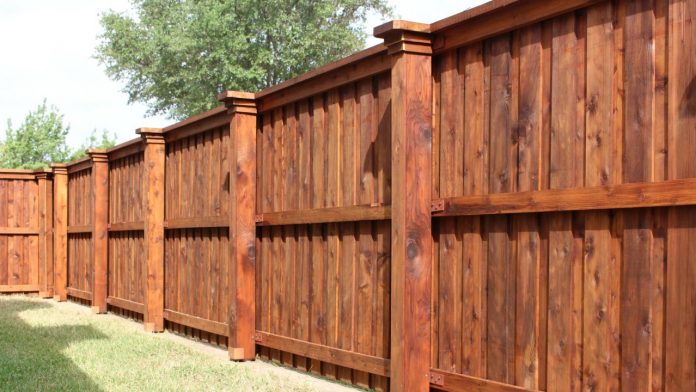After introducing the highly anticipated fence in your yard, you will most likely receive a moan of relief. How could you live so long without it? The wall provides instant protection for your terrace paradise. They help protect the safety of children and pets. Fences can also be outstanding objects by themselves. And, the best part is that neighbors usually coexist better with surrounding fences. The best part is that it can be done without any help from anyone how to build a fence.
If you need a protective fence for a long time but are unwilling to introduce a protective fence, you may be surprised to find that their construction is much simpler than you think. Building a fence is a job that contains only some necessary materials, which are developed using similar essential equipment. The materials used by this particular fence construction company are difficult to obtain in most family communities. From per-developed wall panels to self-curing concrete, many equipment and materials can be used to build a fence, which is simpler and faster than any time in recent memory.
When to build a fence
Although fences in the warm and dry months are becoming more and more acceptable in every situation, the construction of barriers is not a particular climate-dependent task. You can dig a hole regardless of the length of time you pass the ice line in the soil (assuming there is ice). Even in the downpour, concrete can be solidified in harsh weather.
Health considerations
The fence construction is extensive, so please help your colleagues, who can help you haul the sturdy fence boards and poles. Each shield may weigh more than 110 pounds. Not only that, but they are also cumbersome and difficult to control.
Undertaking Metrics
- Working Time: 2 hours for each 8 feet
- All out Time: 3 hours
- Aptitude Level: Intermediate
- Material Cost: $100 to $125 per 8 feet
What You Will Need
- Hardware/Tools
- Measuring tape
- Twine and stakes
- Air pocket level or a laser level
- Post opening digger
- Pencil
- Eye and hearing assurance
- Work gloves
- Checking paint
- Speed Square
- Round observed
- Cordless drill
- Electric miter saw
- Sled
- Scoop
Materials
- Fence boards
- Fence posts
- Brisk setting solid blend
- Universally handy rock
- Fence post tops
- #8 2-1/2 inch outside screws
Guidelines
Talk about the Fence With Your Neighbor
With any limit fence (a fence that is actually on a line between two separate properties), it is in every case best on the off chance that you would first be able to have a well-disposed conversation and go to accord with your neighbor. A few places even necessitate that you get composed authorization from your neighbor preceding structure the fence. Guidelines about sharing the expense of the fence likewise change between networks. Additionally, check your title and other houses buy reports to check whether a property easement lies in the zone where you mean to fabricate the fence.
Acquire a Fence Building Permit
Your locale will expect you to get a license for your fence. Networks need to ensure that walls are kept under a specific stature (typically 6 feet) and are interfered with far enough from open lanes to safeguard sight-lines.
Decide and Measure Fence Placement
After you have chosen where you need your fence to run, tap the wood stakes into the ground every 8 feet. Run the twine from stake to stake, only a couple of crawls over the ground. If all looks fine, shake the checking paint overwhelmingly, at that point splash straightforwardly over the twine’s head to lay a brief line on the ground.
Call your neighborhood utility locator hotline and mastermind the administration to go to the property. This free assistance offered by a consortium of nearby service organizations will stamp the ground to distinguish gas lines, covered wires, and other potential issues you may experience when you burrow.
Digging fence holes
Mark the spots that will appear on the incoming loop line where the fence post is with an “X.” The width of the fence determines the location. The length of the fence is usually 6 feet or 8 feet. The external components of these boards need to hit the focus of the fence posts.
Using a column gap digger, it is possible to dig a gap in the stamping mark, the gap occupies a large portion of the column length, and the width is approximate twice the column length. Thus, for a four-by-four fence post that is 6 feet in length, the opening should be 9 to 12 inches wide and about 3 feet down.
Add the foundation fill to the hole.
Pour about six small ladybugs of commonly used rocks into the opening of the pillar. You can monitor the height of the rock by widening the tape measure into the gap and dumping it until the desired height is reached. The tape will effectively slide out of the rock.
Install the column in the hole
Take one of the four by four fence presents and use it to press on the bedrock at the opening. Fix the fence post in place and secure it firmly. Ask your partner to fill the remaining voids around the fence post with a dry, instant solids mixture. Add water until the dry mix reaches the ground.
Use your horizontal line to make the fence post completely vertical. Keep the level at the head of the fence. Check the two adjacent sides of the fence post to make it perpendicular in all directions.
When the fence is completely vertical, continue to grab the post, and the accomplices pour new water into the dry mix. The mixing will complete the setting in about 20 minutes. Hold on for four hours, and then move on to the next stage.
Attach the fence panel to the post
Place the fence board with a colleague between the two pillars so that the board’s closure touches the focal point of each pillar. Use your level to ensure that the board is level. Use screws to pass through the front of the board and the stringer wraps (even auxiliary parts), and fix the board to the four by four pillars. Do this for the stringers on the entire slab.
Summary: dyeing and back cover
Complete your wall business by recoloring and securing wood. Indeed, even heavy timber and cedar can be profitable with additional guarantees. Attach the current top to the highest point of each fence post. These add improved components to your fence and increase water waste and prevent the highest point of the post from being durable.
When to call a professional
Building a fence is one of the home decorations. It expands its fundamentals and can even overwhelm the most determined do-it-yourself. Inspiration and abilities vary from person to person; however, if it is suggested to be used as a border fence or other long fence, you may need to call the fence construction organization.
Is it easy to build your fence?
DIY fence projects don’t need to be time-consuming and very interesting. Using pre-assembled fence components, even the most inexperienced DIY workers can easily build wooden fences. The trick is just to put the appropriate materials together and follow a specific set of instructions.
How do you make the fence step by step?
Wooden fence post
1: Plan the fence.
2: Measure and arrange the fence poles.
3: Dig a hole.
4: Add “concrete” and “gravel and position piles.”
5: Attach Rails or Panel to the post.
6: Attach the picket to Rails.
7: Install the back cover.
8: Dye or treat the wood.
What materials do I need to build a fence?
- List of fence materials and tools
- DIY fencing kit.
- Chips and strings.
- Tape measure.
- Torpedo level.
- Circular saw.
- Ready-mixed concrete (1.5 bags per post)
- Through-hole excavator.
- Digging/tamping rod.
Can I build an 8-foot fence?
If the previous owner of your property or even the fence you installed (before your needs changed) is now too short, there may be a solution. Adding a fence extension can create a height of up to 8 feet for the fence.
What is the cheapest fence to build?
- The most affordable way to fence in the yard
- Find in advance the type of fence that suits your needs and budget. …
- Treated pine ($12 to $19 per linear foot installation)
- Chain link (10 to 20 dollars per linear foot)
- Wrought iron ($24 to $32 per linear foot)
- Barbed wire ($1.50 to $2 per linear foot)
- Pork shreds ($3 to $5 per linear foot)
- Electric ($1 to $6 per linear foot)
Is it better to nail or nail the guardrail?
Nails can be installed faster than screws, which means less labor for you or your manufacturer (which may reduce installation costs). …On the other hand, screws can fix fences better than nails. They can also ensure easier rework if you need to replace damaged pickets.
Is it cheap to build your fence?
Typical installations, including fence panels, pillars, gates, etc., treated wooden fences are about 50% cheaper than installing typical vinyl fences. The price of a wooden privacy fence (material only) ranges from $7 to $22 per linear foot, depending on the type of wood used, the type of fence, and the height required.
How difficult is it to build a fence?
The technical aspect of installing the fence is not “difficult,” and putting it in is a difficult job. If your husband is usually convenient, if he is willing to do manual labor to do the job, then he should be able to install the fence, especially now you can get the pre-assembled part of the fence there.
What is the best fencing material?
Wood is an attractive classic material that can work in any yard style. It is also cheaper than other options, such as vinyl privacy fence or masonry fence material. Cedar, teak, and mahogany have become popular types of fence materials due to their long-lasting properties.
Can the neighbor post something on my fence?
As long as the fence is not damaged, neighbors can install screens or lattices on the fence. …Usually, grids or screens do not require development approval—the wall on the border. The wall of the building located on the boundary is not a fence, even if it can be used as a fence.
What can I use instead of the fence?
- 7 Dashi fence alternatives in the yard
- Grass. The grass is a natural material; you can make it yourself or buy it from a local logging farm. …
- stone. The stone wall does not require mortar, so you can easily install it and make changes as needed. …
- bamboo. …
- Hedge. …
- Corrugated metal sheet. …
- Vertical garden. …
- Ivy on the rope.
Do fence posts need concrete?
Concrete is the safest material for fence posts, especially when there is sand. Gravel may be okay in dense, clay-heavy soil, but only concrete can make the fence post stuck in place in looser soil.
Are 2 feet deep enough for a fence?
You should dig out the fence post hole in the panel section to a minimum depth of 2 feet. A general formula is to dig a hole between one-third and half the height of the hole on the ground. The deeper you dig, the greater the fence’s stability, but you must also buy longer posts.
Can fence posts be separated by 10 feet?
The fence post is the main component responsible for keeping the cabinet upright and straight. …The typical spacing between each column is about 8 feet, but different situations may require different measurements, and it is not uncommon for the spacing between columns to reach 10 feet.










